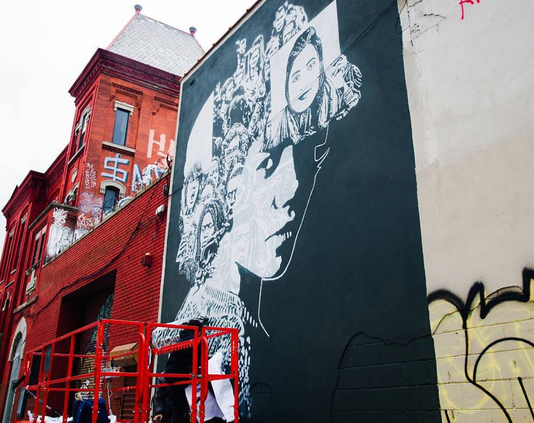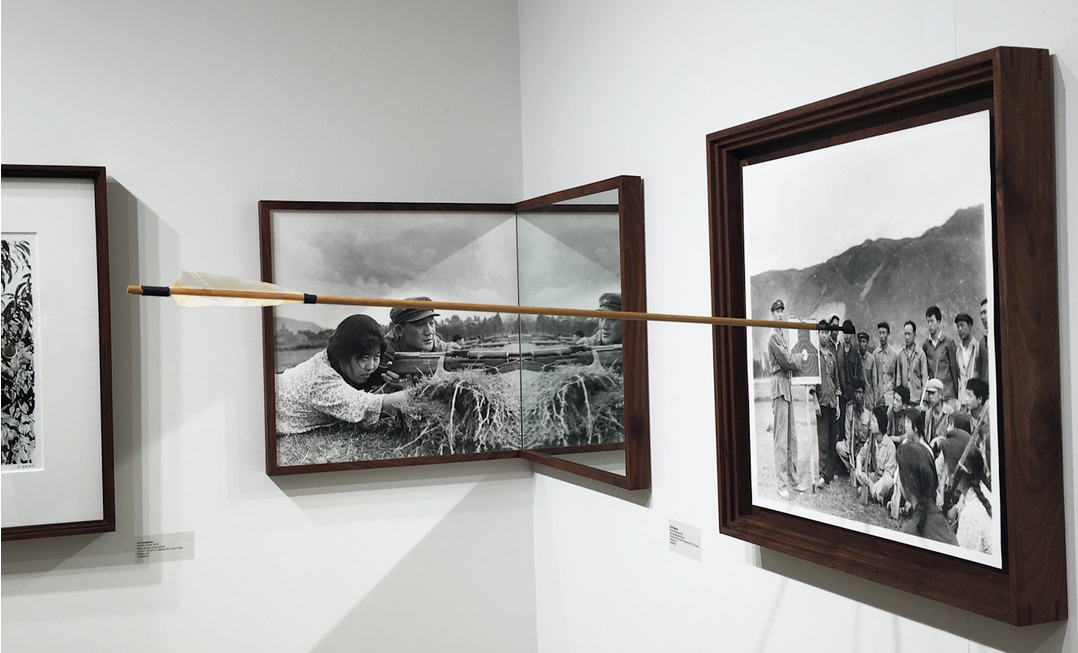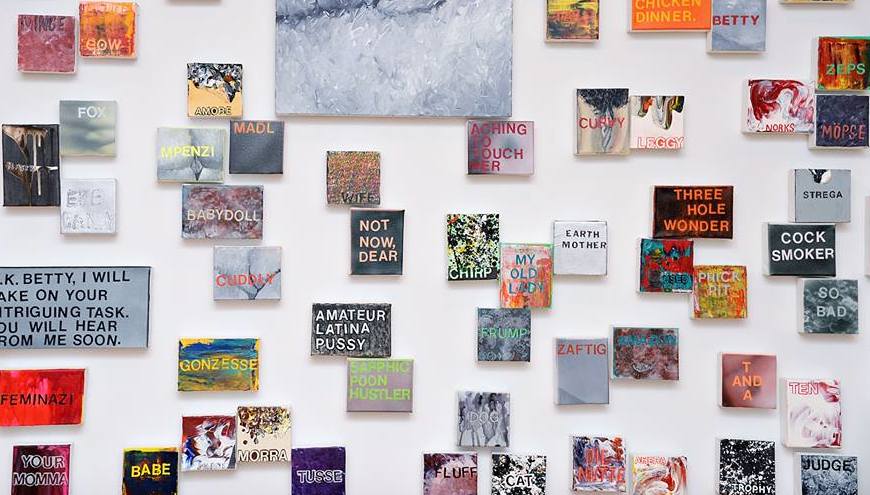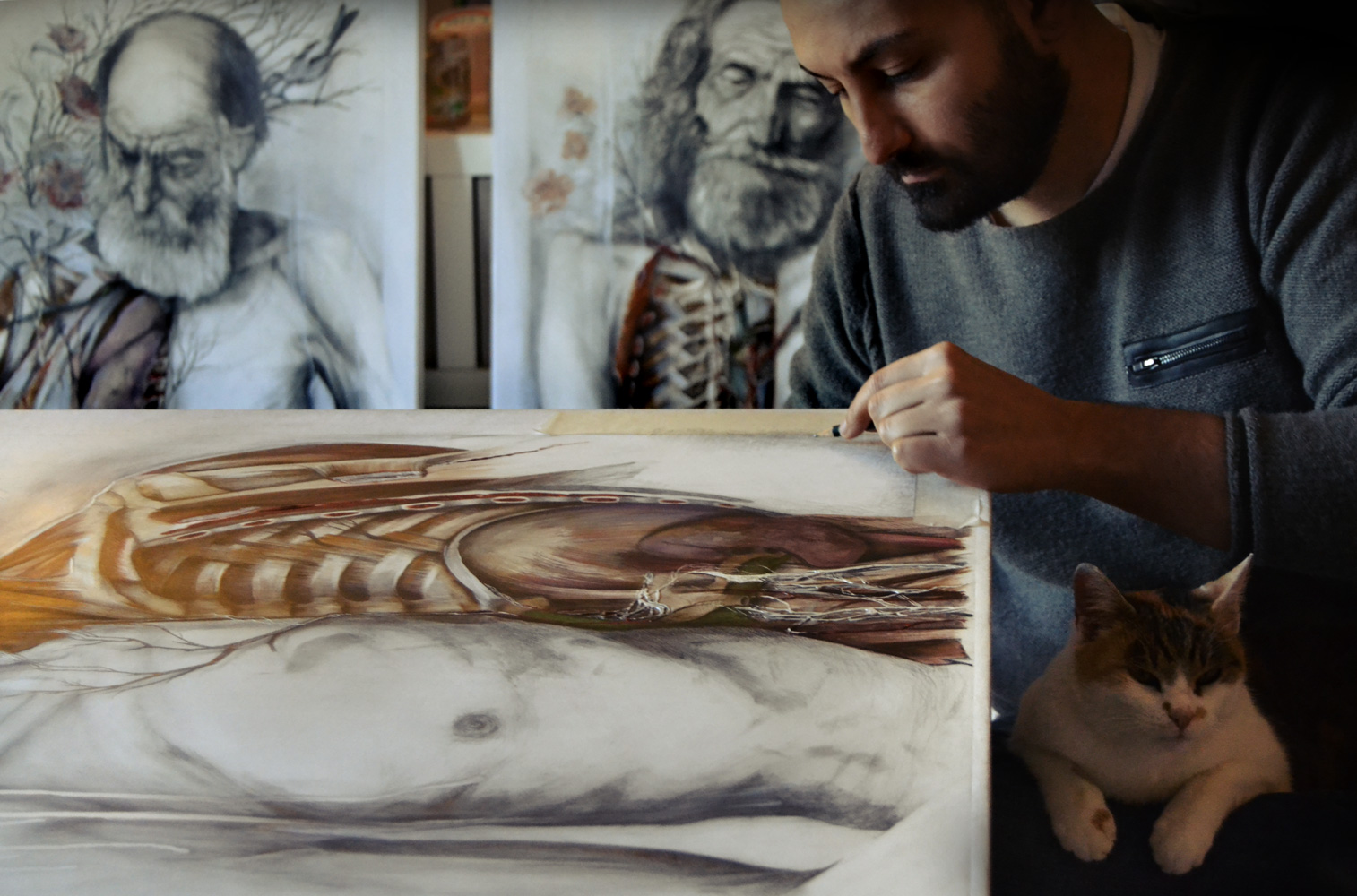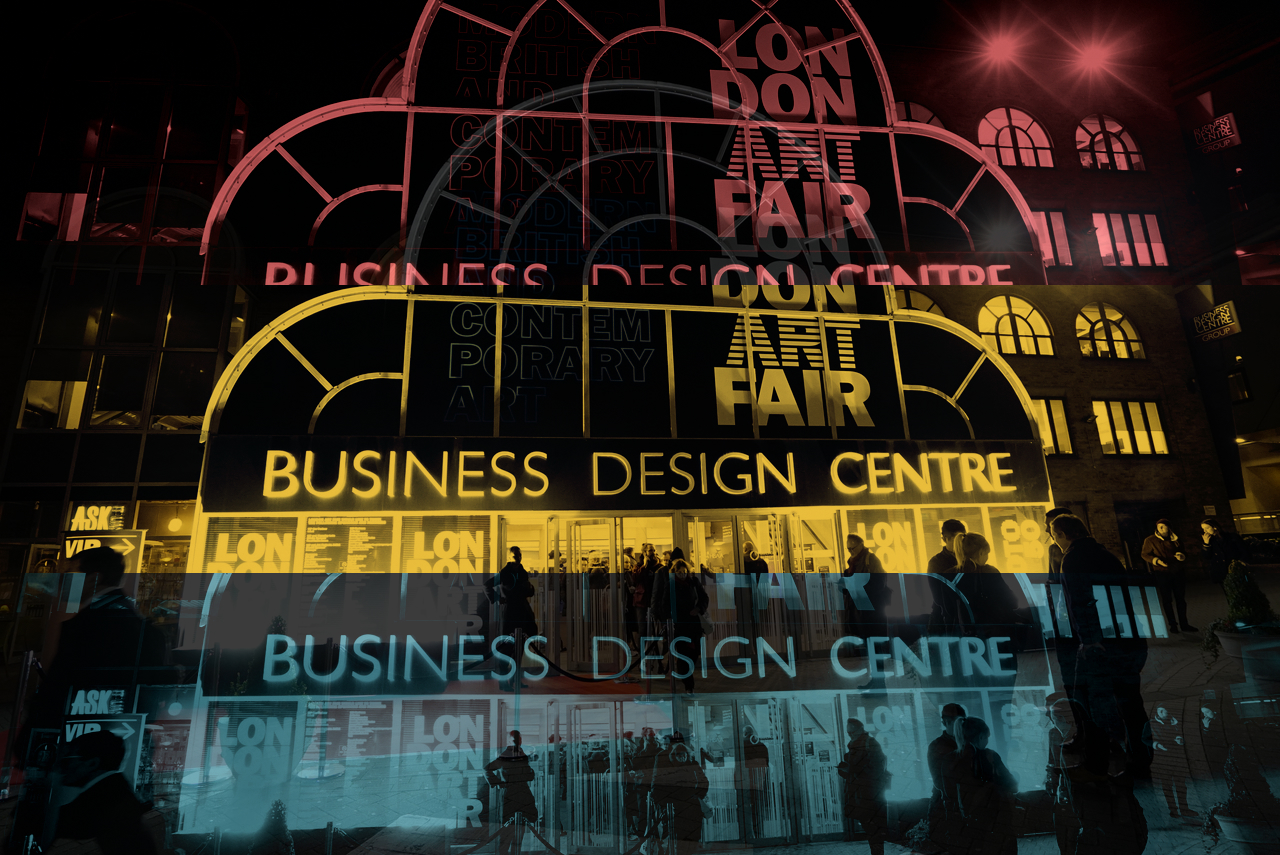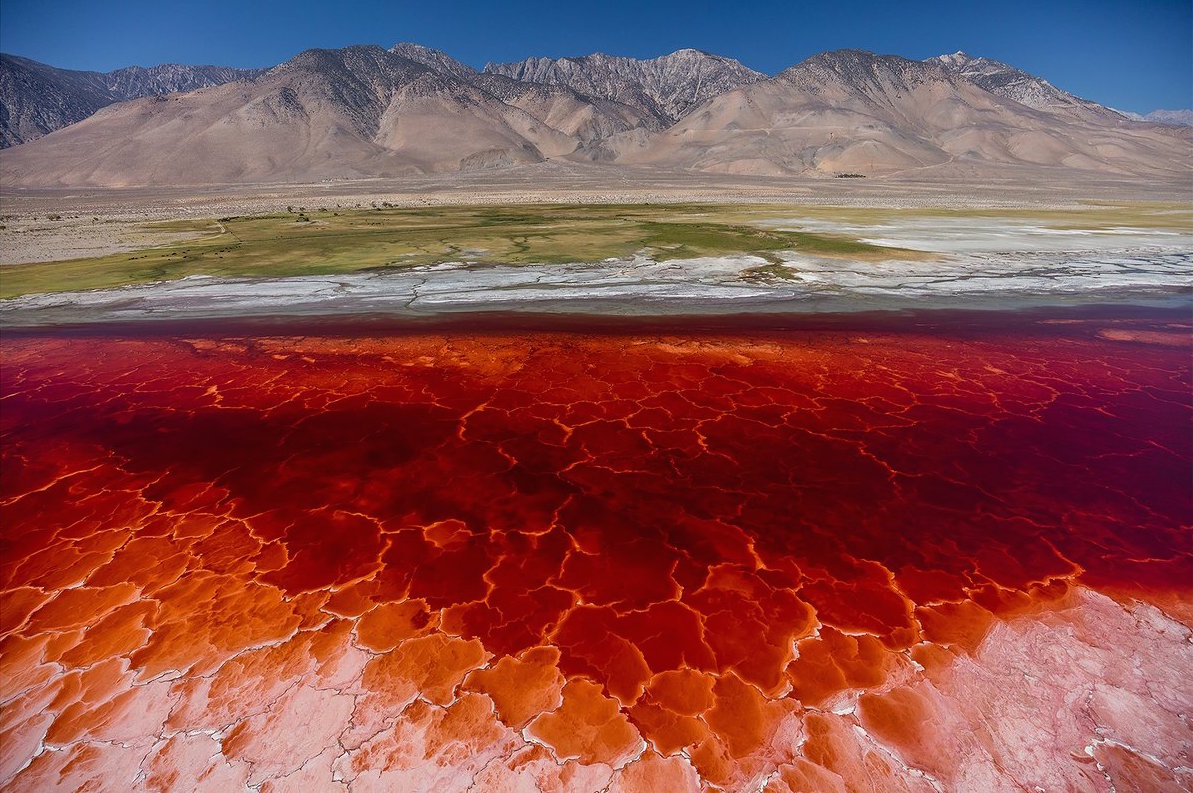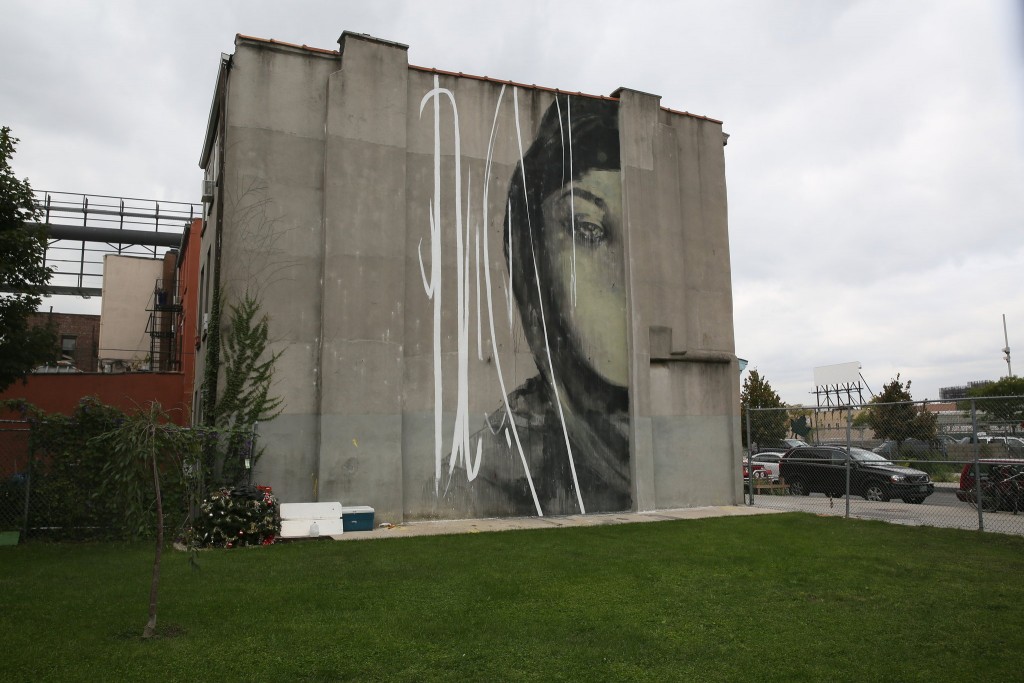
Public art is a statement for all to see. It is a form of art that is accessible to the widest range of audiences, allowing it to play a central role in gaging public opinion. Wall murals come from a tradition of public dissent and political commentary, from Diego Rivera’s communist sentiments to the patriotism of work commissioned by the WPA, the political undertones of large scale murals allow for important discussions in public space about local and international issues.
However, sometimes making a statement can come with a price. “From the beginning, I had extreme anger directed against me,” says Wylie Goodman. She was once awakened by the sound of what she assumed to be gunshots outside of her apartment building, Red Hook (which she owned). It turned out to be paintball guns, fired at a mural painting that Goodman had allowed on the side of her building. The mural, depicting a young mouthless woman wearing a headscarf. The work was part of an international movement in solidarity with Atena Farghadani, who was sentenced to twelve years in an Iranian prison for depicting political figures as animals. The global campaign, Not A Crime, promotes freedom for artists and journalists in Iran and includes artwork by street artists like Ron English, Icy and Sot, and Marina Zumi.
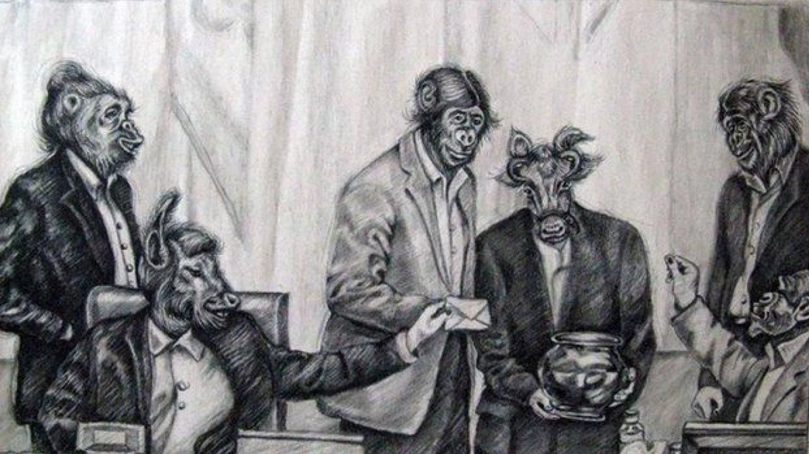
Although Goodman is sad to have to remove the mural, dissent from neighbors has made this piece a liability for her, increased the risk of vandalism to her building, and endangering her safety as well as the safety of her tenants. Goodman had intended for the mural to promote free speech but many people in her community believed the work as anti-American.
“The people I live around every day, their feelings deserve to be heard, even if I disagree with them,” says Goodman of the situation.
Public art has the ability to address international issues and evoke broad concerns related to national security and the freedom of speech, but it can also indicate change and tension on a smaller scale within communities affected by gentrification.
“Gentrification has gotten to the point where every time I see a group of young white millennials in the hood my heart starts racing and a sense of anxiety starts falling over me,” said Will Giron.
Giron is a long time resident of Bushwick, Brooklyn, a neighborhood which is at the heart of the gentrification debate in New York. It is here that Rob Abner, founder of the Brooklyn Flea, invited artist London Kaye to create a yarn mural entitled “moonshine” which depicts one of the stars from Wes Anderson’s Moonrise Kingdom holding hands with the twins from the shining.
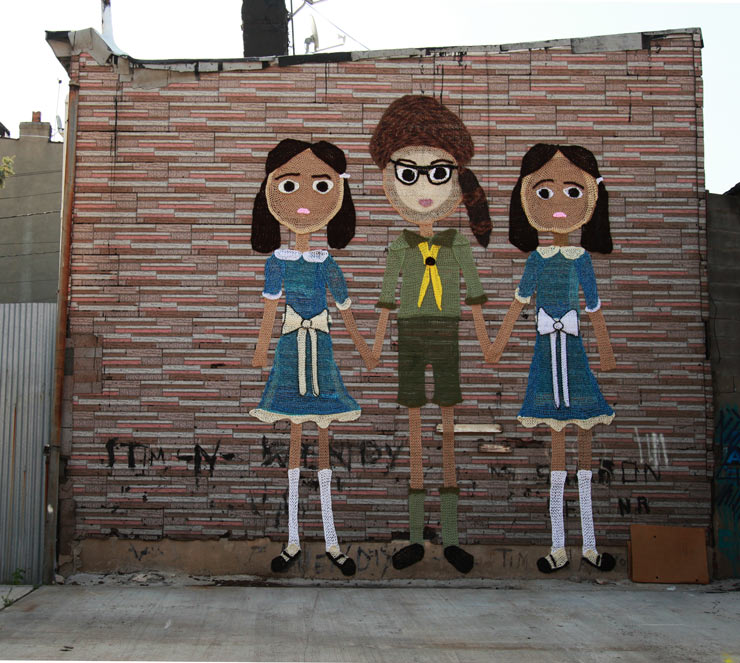
Despite your personal opinion of the mural aesthetically, it has opened up discussion of the tensions of a rapidly changing community. It seems that Abner did not ask permission from Giron before commissioning the mural, and for Giron it has become a symbol of the loosening foothold that long time residents and Brooklyn natives have in the neighborhood. Although Abner claimed to be “increasing property values” by cleaning out the back lot of the property and installing the mural, Guron and his family see it as an act of claiming territory.
Public art is not just aesthetic statement. It speaks to the experiences and beliefs of people who live in a neighborhood. It is an opportunity to invite people to think about global issues, or ones that are affecting them on a local level. Here’s to art that stirs up controversy and invites discussion.
Like this article? Check out another article on unwanted public works of art, or other socially conscious art projects.


